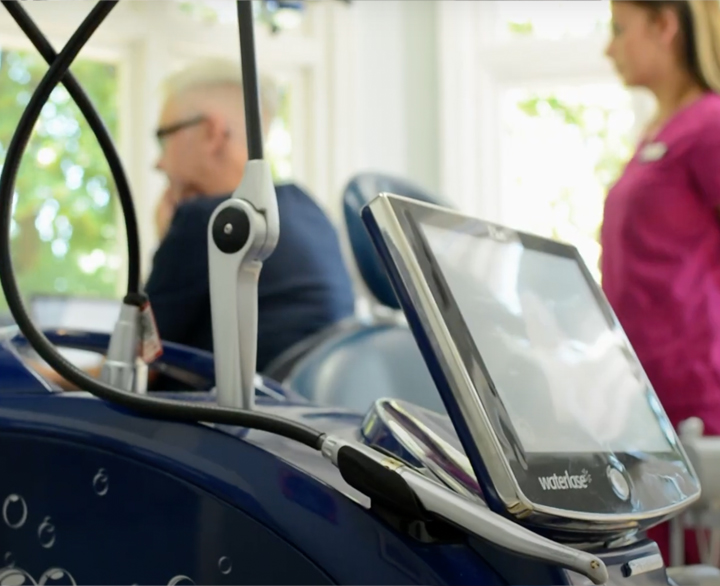
What is Oral Mucositis?
Oral mucositis is a common side effect of cancer therapy. Cancer therapy targets fast dividing cells, and the inside of your mouth is mostly made up of these. As a result, the lining of the mouth becomes irritated leading to redness, swelling and painful ulcers may form. This can make eating and drinking extremely uncomfortable and in severe cases, lead patients to pause or even abandon treatment.
What is Low Level Laser Light Therapy (Photobiomodulation)?
It has been known for many years that low level laser light therapy can prevent and/or treat mucositis. Indeed, it was approved for this by NICE (National Institute for Health and Care Excellence) in 2018 https://www.nice.org.uk/guidance/ipg615.
However, it is still difficult to access this treatment, despite it being very simple and very quick. In the US it is now the recommended standard of care for patients undergoing certain types of cancer therapy, and in Australia it is mandated for children undergoing chemotherapy.
LLLT is the application of low-level red light to tissues. The light increases the energy in your cells so they can repair and lowers the harmful molecules known as free radicals which cause damage. After you relax in the chair and put on the safety glasses, the light probe is applied around the inside of your mouth and takes 5-6 minutes. For prevention of mucositis, we treat patients the day before each cancer therapy session and sometimes immediately after it too. Ulcers are treated as and when they occur.
Side Effects
There are none! You won’t even feel the treatment! At Wayside we can treat our own patients undergoing chemotherapy and we are pleased to report they have avoided mucositis. If you are not able to access this treatment at your hospital, we recommend, at the very least, using a therapeutic LED light daily. We hope that more cancer centres will invest in these lasers and anticipate that ultimately, we will take the lead from the US and make it the standard of care here too.